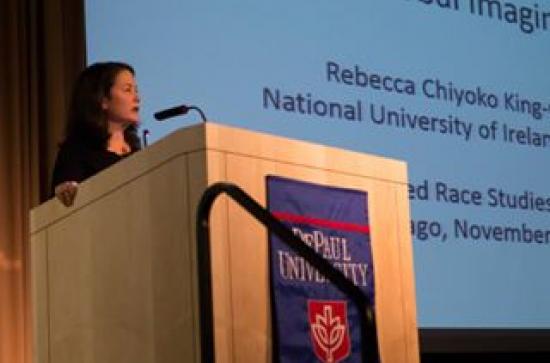Zélie Asava: mixed-race identities and representation in Irish, U.S. and French cinemasPosted in Articles, Communications/Media Studies, Europe, Interviews, Media Archive, United States on 2015-03-01 03:50Z by Steven |
Zélie Asava: mixed-race identities and representation in Irish, U.S. and French cinemas
African Women in Cinema Blog
2015-02-28
Beti Ellerson, Director
Centre for the Study and Research of African Women in Cinema
Interview with Zélie Asava by Beti Ellerson, February 2015.
Zélie Asava of Irish-Kenyan parentage with English citizenship, is a lecturer in film and media theory and national cinemas at Dundalk IT and University College Dublin. She explores mixed-raced identities and its representation in Irish, U.S. and French cinemas.
Zélie could you talk a bit about yourself?
I was born in Dublin to Irish and Kenyan parents. Having lived in London previously, they decided to raise me there. As an adult I moved back to Ireland, to go home and develop my career in academia. While, Dublin is a fascinating city with a great cultural scene, I found the experience much more troubling than anticipated due to the growth in racism during the economic boom of the late ‘90s/early 2000s (see my piece for The Evening Herald newspaper).
As an undergraduate, I became involved in student anti-racism movements at University College Dublin and Trinity College Dublin, and worked with community groups. During my MA at the University of Sussex and PhD at University College Dublin I studied the representations of black and mixed-race characters in French and American cinema, while pursuing work as an actress and journalist. In my professional life I have also worked in politics and equal opportunities consultancy, and lived in Canada and France, before becoming a lecturer.
How has your identity influenced your interest in racial representations?
This personal and academic experience prompted me to explore what it meant to be black and Irish from a theoretical and social perspective. I studied the history of black and mixed-race people in Ireland and their representation onscreen, and began to develop research papers on the subject which finally became the book, The Black Irish Onscreen: Representing Black and Mixed-Race Identities on Irish Film and Television (Peter Lang, 2013).
Due to the cinematic context of my research, the mixed characters I analyse are mostly of African/European heritage, mostly female and mostly heterosexual (following dominant representations). By uncovering, deconstructing and critiquing these representations my work contributes to opening up spaces for new filmmakers, new screen visualizations of raced characters and new understandings of race and racism…
Read the entire interview here.
